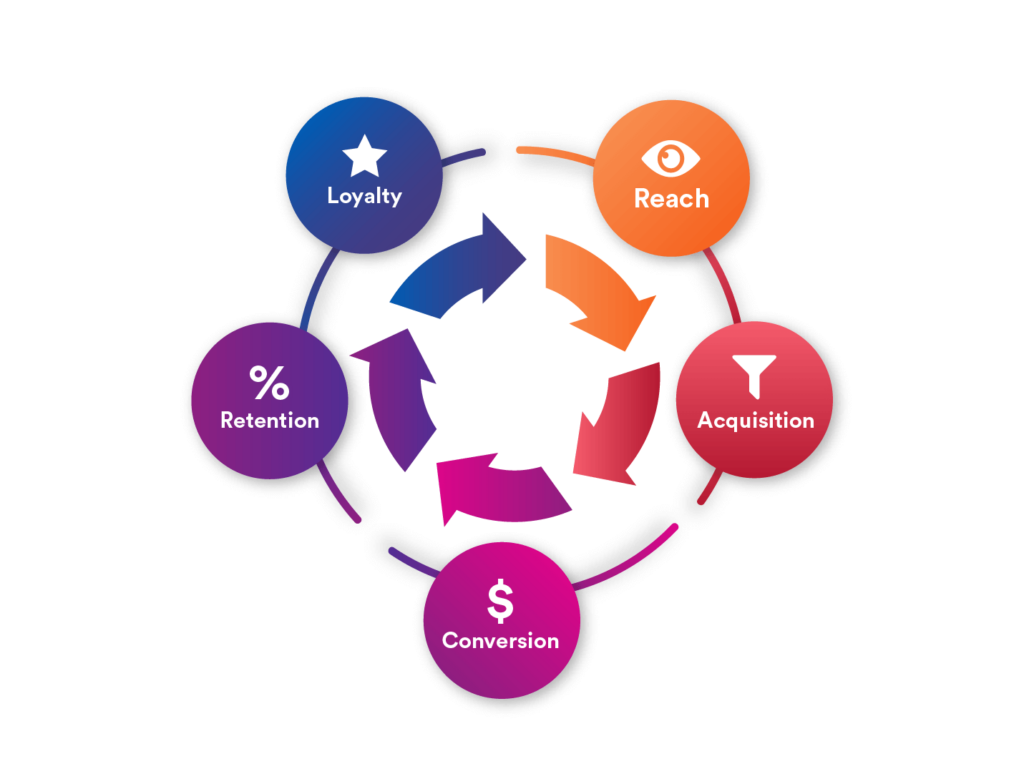
Introduction:
In the world of marketing, understanding and engaging with customers throughout their journey is crucial for building long-lasting relationships and driving business growth. Lifecycle marketing is a strategic approach that allows your marketing team to tailor messaging and experiences to customers at different stages of their journey. In this blog, we’ll provide your marketing team with a crisp and clear guide to lifecycle marketing. By implementing these strategies, you can effectively nurture leads, retain customers, and maximize the value of each customer interaction. Let’s dive in!
- Define Your Customer Lifecycle:
To implement lifecycle marketing successfully, start by defining your customer lifecycle stages. Typically, these stages include awareness, consideration, conversion, retention, and advocacy. However, the specific stages may vary based on your industry and business model. Understand the key touchpoints and actions that customers go through at each stage to create a roadmap for your lifecycle marketing strategy. - Create Relevant and Personalized Content:
Tailor your messaging and content to align with each stage of the customer lifecycle. At the awareness stage, focus on creating educational and informative content that introduces your brand and value proposition. In the consideration stage, provide detailed product information, comparisons, and customer reviews. During the conversion stage, highlight the benefits, offers, and incentives to encourage purchase. For retention and advocacy, deliver personalized content that deepens customer engagement and promotes loyalty. - Leverage Automation and Personalization:
Automation is a key component of lifecycle marketing. Utilize marketing automation tools to deliver personalized and timely messages to your customers at each stage. Set up automated workflows that trigger specific actions based on customer behaviors and milestones. For example, automate welcome emails for new leads, abandoned cart reminders, and post-purchase follow-ups. Personalization based on customer data and preferences will enhance the effectiveness of your lifecycle marketing efforts. - Monitor and Measure Performance:
Regularly monitor and measure the performance of your lifecycle marketing campaigns. Utilize analytics tools to track key metrics such as conversion rates, customer retention rates, and customer lifetime value. Analyze the data to identify areas of improvement and optimize your messaging and strategies accordingly. Continuously refine your approach to ensure that your lifecycle marketing efforts are aligned with your business goals. - Foster Customer Advocacy:
Don’t overlook the power of customer advocacy in lifecycle marketing. Delight your customers and encourage them to become advocates for your brand. Offer incentives for referrals, provide exceptional customer service, and actively engage with your customers on social media. Happy and satisfied customers can become your biggest promoters, driving organic growth and attracting new customers to your business.
Conclusion:
Lifecycle marketing is a powerful approach that allows your marketing team to engage with customers at different stages of their journey. By defining your customer lifecycle, creating relevant content, leveraging automation and personalization, monitoring performance, and fostering customer advocacy, you can build stronger relationships with your customers, drive conversions, and maximize the value of each customer interaction. Embrace lifecycle marketing as a strategic framework to guide your marketing efforts and watch your business thrive.
